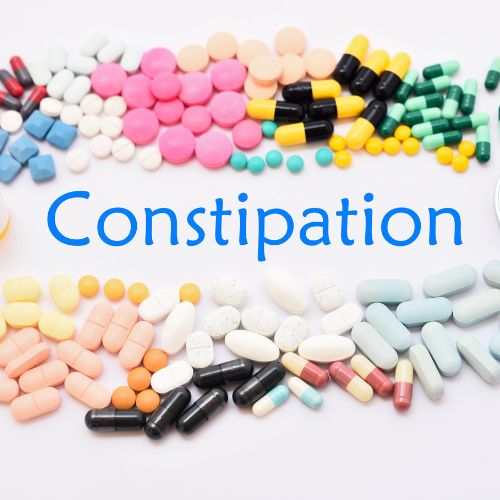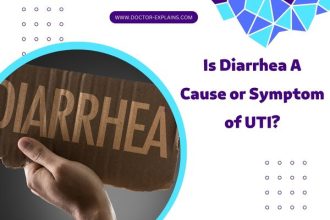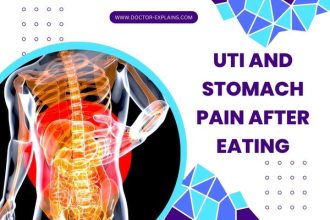6 Causes of Lower Abdominal Pain and Headache.
Our content is not intended nor recommended as a substitute for medical advice by your doctor. Use for informational purposes only.
1. Irritable Bowel Syndrome.
Irritable bowel syndrome (IBS) is a common functional digestive system disease. People with IBS often have recurrent attacks of abdominal pain (diffuse or in the lower abdomen) and bowel habit changes (diarrhea or constipation).
On the other hand, headache is one of the most common associations with IBS. The two most common types of headache are Tension-type headache (TTH) and migraine).
Both are common with IBS,
For example, a large study involving more than 8000 subjects found that migraine and IBS are closely related. The same study found that patients with migraine are FOUR times more likely to have IBS than people without migraine.
Another study found that bother migraine and tension-type headaches (the two most common types of headaches) are significantly Higher among IBS patients.
Combined primary headache and IBS are common explanations of recurrent or chronic headaches and lower abdominal pain.
2. Female Hormones.
Females are more sensitive to pain. Therefore, disturbances in female hormones such as estrogen and progesterone can result in different and unrelated symptoms such as headache and lower abdominal pain.
These symptoms are more evident during periods of hormonal changes such as with:
- Just before and during the menstrual period.
- Pregnancy (especially in the early days of pregnancy).
- During ovulation (mid-cycle).
Some women get headaches (migraines) only during their periods (called menstrual migraine).
Consider hormonal imbalance if headache and lower abdominal pain occur in a cyclic pattern every month.
Hormonal fluctuation is physiological and occurs in females without any diseases.
Other associated symptoms of hormonal fluctuations:
- Mood changes.
- Nausea and loss of appetite.
- Unexplained shortness of breath.
- Constipation or diarrhea.
- Back pain.
3. Infections (especially viral gastroenteritis).
Sometimes mild gut infection (gastroenteritis) causes little to no diarrhea. Lower abdominal pain and headache can be the only symptoms of mild gastroenteritis.
The most common cause of infection is viruses. Rota and norovirus are the most widespread types of infection. Other causes include bacterial infections (E. Coli) and protozoa (such as amoebiasis and giardiasis).
Lower abdominal pain and headache are widespread among viral infections (stomach flu).
Symptoms of viral gastroenteritis (stomach flue):
- Acute onset diarrhea and loose stool
- Abdominal cramps (often in the lower abdomen) and pain.
- May be: loss of appetite, nausea, and/or vomiting
- Fever, usually low grade.
- Headache.
- Maybe muscle aches.
- It lasts for hours to a few days.
- NOT associated with: bloody stools or high-grade fever.
You may experience some headache and lower abdominal pain as the earliest symptoms. Later, diarrhea, nausea, and muscle aches may show up.
4. Migraine:
Migraine is the second most common primary headache affecting about 15% worldwide.
Migraine is a severe pulsation or throbbing type of headache often associated with other symptoms.
The frequently associated symptoms are mainly visual and auditory. In addition, although not common, lower abdominal pain occurs with migraine headaches.
Symptoms (how to know it is a migraine?):
Migraine has more distinctive features that separate it from tension-type headaches. Migraine tends to be more severe, unilateral, pulsating, and associated with an aura (see below).
The typical migraine attack passes into four stages:
1. Migraine prodrome:
- Occurs in most patients (77% of patients with migraine pass through the prodrome stage).
- Prodrome symptoms are a group of affective or mood symptoms that proceeds with the headache.
- Common symptoms include repeated yawning, euphoria, depression, irritability, food cravings, neck stiffness, and sometimes constipation.
2. Migraine Aura:
- Affects about 25% of patients with migraine.
- They are a group of neurological symptoms and are characteristic of migraine; they include:
- Visual symptoms (bright lines, shapes, objects, or visual loss).
- Hearing symptoms (tinnitus, hearing noises, music, or loss of hearing).
- Abnormal movements or inability to move a part of your body.
- Patients can experience one or more symptoms at the same time.
- Duration: the symptoms develop gradually but disappear rapidly in no longer than an hour.
3. The migraine headache stage.
- Starts after or during the aura stage.
- It is often unilateral (70%), but it can be bilateral (30%).
- Pulsation or throbbing in character is felt in the front and sides of the head.
- The duration of the attack is at least 4 hours, and it can last for several days if left untreated.
- Headache is often exacerbated by daily activities such as walking or climbing stairs (impairing the quality of life).
- It can be associated with other symptoms such as nausea and vomiting.
4. Migraine postdrome.
- Starts after the resolution of the headache.
- The patient may feel pain when he turns his head or neck.
- Exhaustion and fatigue.
5. Food allergy.
About 2-5% of the adult population have some food allergy. Food allergy is different from food intolerance.
Food allergy is an immune-mediated reaction to food, while food intolerance is a difficulty digesting or absorbing certain foods.
The fundamental difference between food allergy and food intolerance is the presence of extra-intestinal symptoms.
Allergic food reactions have extra-intestinal symptoms such as headache, skin rashes, or swollen lips, while food intolerance doesn’t have such symptoms.
So, acute onset of lower abdominal pain and headache can be related to an allergic reaction to a food you ingested.
Common offending foods:
- Raw meet.
- Seafood.
- Nuts and peanut.
- Mustard.
- Rice.
- Some vegetables and fruits such as bananas and strawberries.
Symptoms:
- The onset of lower abdominal pain and headache occurs shortly after ingesting certain offending foods (see above).
- Intestinal symptoms include lower abdominal pain, diarrhea, gas, bloating, and nausea.
- Extra-intestinal symptoms include headaches, swollen lips, skin rashes, urticaria, swollen face. In severe cases, severe allergic reactions can also occur.
6. Stress and anxiety.
Stress and anxiety are widespread nowadays. However, some people are more vulnerable to the effects of stress and anxiety than others (especially women).
Chronic or acute psychological stress or anxiety can cause widespread body pains (including headaches and lower abdominal pain).
In one study on 502 adolescents, 40% had weekly headaches, and 36% had abdominal pain. In addition, researchers have found a clear relationship between anxiety and stress levels with lower abdominal pain.
The headaches and lower abdominal pain are greatest when the stress is high. Moreover, These symptoms often decrease or go away when the stress ends.
7. Random association and others.
A. Coincidence.
Put into your consideration that headaches and lower abdominal pain can coincidently happen together, Each due to its cause.
Time can be the only connection between headache and lower abdominal pain as both complaints are widespread.
B. Other (less frequent causes).
- Thyroid gland dysfunction (particularly hyperthyroidism).
- Celiac disease.
- Inflammatory Bowel Disease (IBD) as Crohn’s and Ulcerative Colitis.
- Diverticulitis.
- Food-borne illness (food poisoning).
- Colorectal cancer.
- Anemia (causing headache) due to parasitic infestations (causing lower abdominal pain).
- Chronic constipation.
- Urinary tract infection (cystitis).
- And many others.
When to see a doctor:
- New onset of severe headache or severe abdominal pain
- Fever.
- Severe body aches.
- Prolonged headache for more than 72 hours.
- Long or extreme abdominal pain.
- Blood in stool.
- Signs of anemia (fatigue, shortness of breath, dizziness, or blurred vision).
- Severe diarrhea.
MORE:





